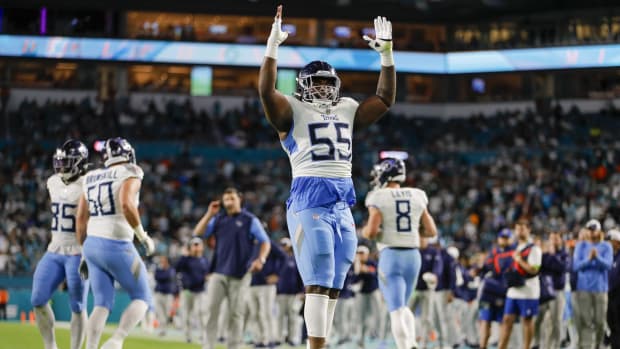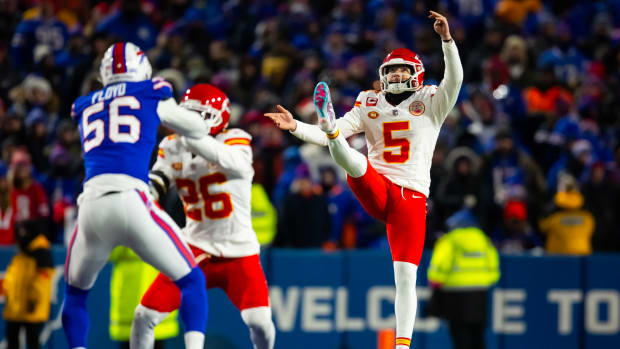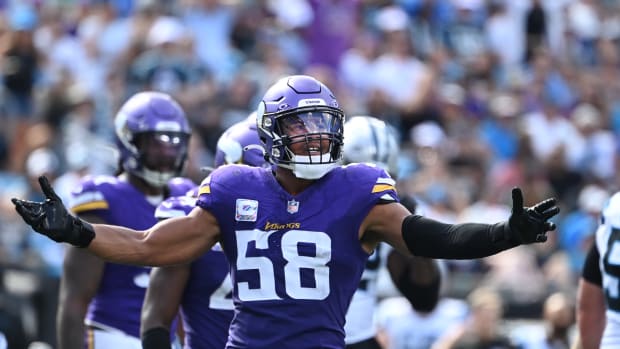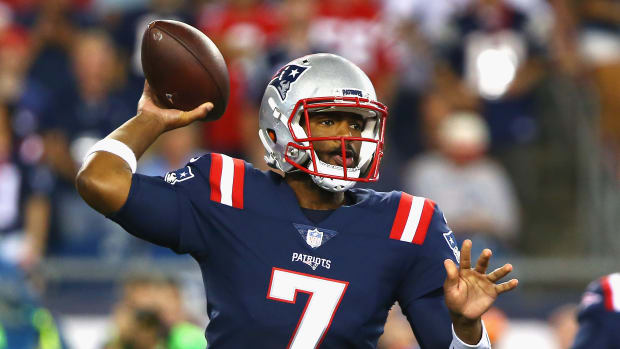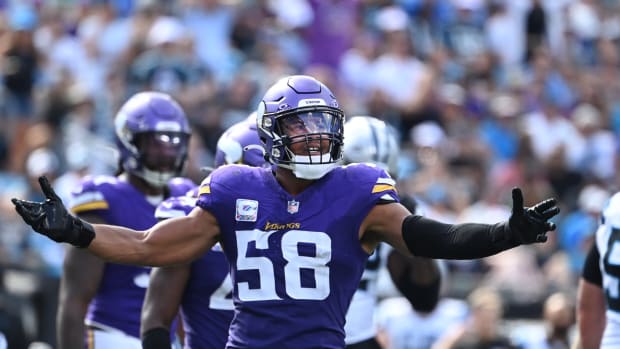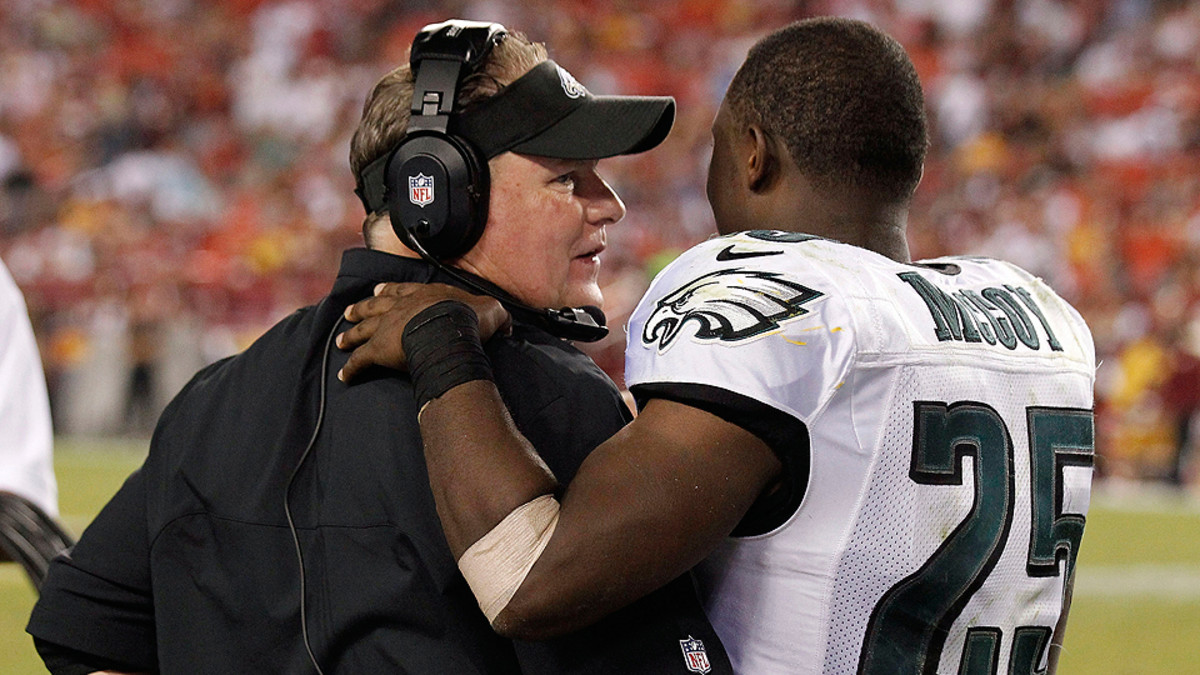
The All-22: How Eagles coach Chip Kelly makes his running backs better
LOS ANGELES -- When the Philadelphia Eagles hired Chip Kelly to replace Andy Reid as their head coach on Jan. 16, 2013, they weren't just bringing in a college guy and hoping for the best in an era when college coaches are doing well in the NFL. The Eagles gave Kelly personnel powers, spent over $1 million on the advanced machinery Kelly uses to monitor the conditioning of his players and generally handed over the keys to the franchise in ways that most first-time NFL coaches never see. There's a reason for that -- the Eagles' formerly dynamic offense had gone sour, and if there's one thing Kelly proved he could do during his time at Oregon, it was taking an offense by the scruff of the neck and redefining it with his own preferences.
POSITION RANKINGS:Safeties|CBs|DTs|Pass rushers|LBs | O-Line | TEs
Because Oregon ran a lot of spread formations when Kelly served as the school's head coach from 2009 through '12 after two years as offensive coordinator, many assumed the Eagles would be throwing the ball even more than they did when Reid was the coach. That assumption proved to be an erroneous generalization of what a spread offense can do -- many spread-style collegiate systems lead with the running game, and Kelly's did at Oregon, as well. In Kelly's first year as head coach, the Ducks ran the ball 42.1 times per game to 26 passing attempts per contest. In 2012, the only thing that changed was the incredibly fast pace at which the team played -- that year, Oregon ran the ball 52.7 times per game against 28.7 passing attempts. Kelly has always evangelized the power of the run game, whether it comes through play action, various quarterback option plays, or inside power running out of wide-open sets that catch defenses completely by surprise.
That transferred well to Philly last season -- the Eagles ran the ball 500 times and passed it 508 times, an unusually balanced ratio in an era when NFL teams are throwing it more than ever, with a couple of outliers. In the last three seasons, Kelly's primary running back has enjoyed a career season. In 2011, LaMichael James ran for a school-record 1,805 yards on just 247 carries and scored 18 rushing touchdowns with a 7.3 yards-per-carry average. In 2012, Kenjon Barner replaced James with a season just as great -- 1,767 rushing yards on 278 carries and 18 rushing touchdowns with a 6.4 yards-per-carry mark.
And then, there was LeSean McCoy, who in 2013 became the first Eagles player to win an NFL rushing title since Steve Van Buren did it in 1949. McCoy rushed for 1,607 yards on 314 carries and nine rushing touchdowns. He also led the league in yards from scrimmage by adding 539 receiving yards on 52 catches. Not bad for a guy who missed four games the season before, had never run for more than 1,309 yards in a season and had two years in which he didn't even break 1,000 rushing yards.
So, what is it about Kelly's offensive acumen that benefits backs so often and so well, especially in a time when the lead back is allegedly a dying breed in the NFL?
For Kenjon Barner, offseason training key to on-field opportunity at Carolina
The Zone-Read Run
Inside Zone
First of all, Kelly brought the inside zone and outside zone run games with him from Oregon, and while there's much more to his concepts than these two things, you could say that it all emanates from here. Last season, according to ESPN Stats & Info, the Eagles led the league by far in zone-read runs, gaining 1,713 yards on 304 zone-read carries (5.63 yards per carry) and 881 yards on 174 carries with other types of runs. The Bills had the second-most zone-read runs, and they ran them 135 fewer times.
Just as Kelly turned the traditional spread offense clichés on their veritable heads with a run-dynamic philosophy, he's got some different ideas about how the zone read is run. At a 2009 Nike coaching clinic, he outlined very specifically how these plays are supposed to be run in his offense. Kelly was Oregon's head coach at the time, but the principles moved with him to Philly, and they work just about anywhere. And it's the inside zone concept that Kelly has always called his bread and butter.
"We want to get off the ball and be a physical, downhill-running football team," Kelly said back then. "This is not a finesse play. We teach our offensive linemen a block we call the bust block. The idea is to bust their sternums against their spines on every play. We want to come off the ball, create a double team, knock the crap out of the defender, and deposit him in the linebacker's lap."
Patriots, Cowboys, Lions lead the list of best offensive lines
Add in the read aspect of the inside zone -- where at least one defender has to choose between spying the quarterback and going after the running back -- and you have a devastating play concept based on defensive hesitation. It's just the same in the NFL, even with more talented and complex defenses. McCoy's 30-yard gain in Week 3 of the 2013 season against a Chiefs defense that was one of the NFL's best is a perfect example.
Down 16-6 with 9:25 left in the third quarter, the Eagles had 2nd-and-4 at their own 25-yard line. Kansas City went with nickel coverage and one safety up top, with strong safety Eric Berry (29) moving down to spy Michael Vick on the defensive right edge. Center Jason Kelce throws a perfect block on tackle Dontari Poe, guard Evan Mathis dominates linebacker Derrick Johnson, Berry hesitates for a second on Vick, and McCoy is off to the races. He's the perfect back for a Kelly offense, because he's fast enough to use that hesitation as a lethal weapon.
Kelly went on to say that if there's a six-man box, the quarterback is responsible for that sixth man -- not through straight-on blocking, but by reading the defender and controlling him. That's where the read aspect of this play is so effective, and why teams who stack the box against the Eagles aren't as successful as they assume they'll be. This worked equally well with Vick and with Nick Foles, who's obviously less athletic. As long as the defense believes in the control of the potential quarterback movement, the sixth defender is on a string.
Outside Zone
The outside zone further allows Kelly's backs to use their speed and shiftiness to create explosive plays, and here's a perfect example against the Redskins last year. The Eagles have a tight end inline against Washington's eight-man box, and it's Vick's job to occupy the backside defender. Because Mathis and Kelce pull to the outside so well, what looks at first like a play in which McCoy is boxed in turns into a big gain, because everyone plays with conviction. It's not that Kelly's trying to fool anyone; he's got a few basic run sets with some variations, and he's not trying to beat you over the head with his playbook. This is about flawless execution.
"We do have wide splits, and I think this is where Chip is a brainiac, is that he makes you cover the whole entire field," McCoy said. "And that's tough. You talk about the NFL, and the best of the best ... well, he finds ways to spread the ball where we can throw it, run it, go deep on you, go short, screen passes. He has so many different options in the offense, and now you add in a guy like [Darren] Sproles, who's deadly. So, imagine us in the backfield together with all those moves and formations. You don't know what to think."
It's a universal concept with Kelly's backs -- Barner told me the same thing.
"It puts you in a position to succeed," Barner said. "That's what Coach Kelly does best -- he puts you in a position at your best. Whatever your best is, that's what the offense allows you to do. You can show everyone what you can do, and as a running back, you love that. It creates space, it creates lanes, and you can get going when you're one-on-one with a defender."
It would seem that an offense that is fairly stock when it comes to formations would be relatively easy to figure out. After all, the Wildcat, with its Steeler, Counter and Power iterations, went the way of the dinosaur when defenses picked up the reads and shut it down. And more standard quarterback option packages tend to last about as long as the quarterback does -- and as Vick could tell you, that generally isn't too long. The brilliance of Kelly's system -- and what will ensure its continued success -- is that it combines razzle-dazzle and smashmouth in equal doses. And it's designed from the start to make defenses guess wrong.
"In this offense, we keep you guessing," McCoy said. "There are times when the defense says, 'We've seen this -- it's a pass.' Or they think it's a run, and it's totally the opposite. And I think that when you give a defense so many different looks that all look the same -- the formations all look the same -- it's hard to really study them. It's hard to really know. It keeps them off-balance, it really does.
"Our offense is a big-play offense. We're not that kind of typical, boring three-yard offense; we keep the chains moving. That's big here, because I feel that I get the most out of myself as far as quickness and explosion."
Opposing coaches are certainly wondering what Kelly has in store for an encore, but his running backs already know.










































